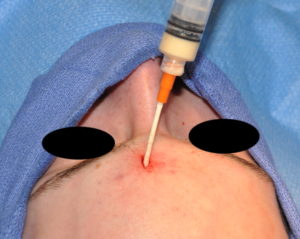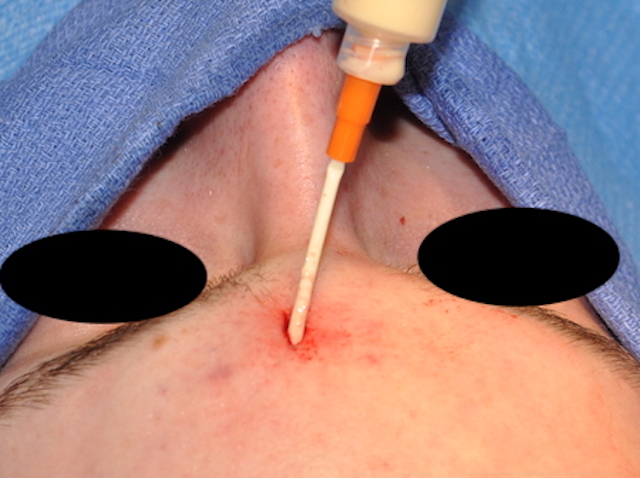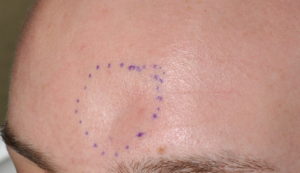The most prominent shape on the forehead is that of the brow bones. (in men) Otherwise the surface of the forehead is relatively smooth. Because of the large surface area of the forehead, occupying one third of the face, any changes in its surface topography can be very visible. Whether it is a raised area (prominence) or an indentation (depression) it is easily seen particularly in certain lighting from various angles.
The treatment of forehead bony prominences is done by bine burring or shaving to lower their profile. Conversely the treatment of forehead contour depressions requires bone augmentation which can be done with either bone cements or various implants. While fat injections can be used for forehead augmentation their survival and biologic behavior (with weight gain and loss) is not completely predictable.
In performing any form of forehead contouring access for augmentation and reduction requires a surgical incision, usually at or behind the hairline. This incisional placement becomes more challenging when it is a male with either a very short hair cut or lack of a hairline at all. For many cases of aesthetic forehead contouring in men the concern about the scar from surgical access is one of the most important considerations in the potential surgery.

While this injectable bone cement approach can be effective it is also very technique sensitive and unforgiving. Once the cement is injected and set there is no easy way to secondarily shape or modify it. The key is determining the volume of injected cement vs the volume of the defect. Too much cement for the size of the defect will result in a lump or over correction. It is far better to have too little and have a slightly suboptimal improvement as that can more easily be supplemented secondarily.
Dr. Barry Eppley
Indianapolis, Indiana




